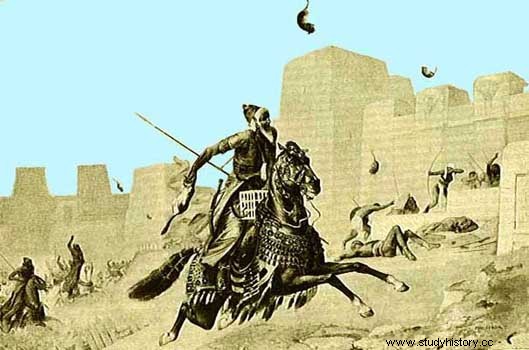In 526 BC, after the death of his father, the pharaoh Ahmose II , rise to the throne of Egypt Psammetichus III . He inherits a prosperous kingdom but with a latent threat... the Persian Empire . Cambises II , king of Persia of the Achaemenid dynasty, continued the expansion of the empire started by his father, Cyrus II the Great , and set his eyes on Egypt.
Cambyses had prepared the march of his army through the Sinai desert with the help of Arab tribes who prepared for him water tanks, essential for crossing the desert. The pharaoh's hope to avert the Persian threat was based on a theoretical alliance with the Greeks. However, his hope was in vain when he found that there was no such alliance and, moreover, Fanes of Halicarnassus , commander of the Greek mercenaries based in Egypt, had gone over to the Persian side. The decisive battle was to be fought in front of the gates of the city of Pelusium in 525 BC

Cambyses captures Psammetichus
In addition to the superiority of the Persian army and the pharaoh's fledgling, the fact that the Egyptians considered cats to be manifestations of the goddess Bastet also had to do with the battle. and therefore they were sacred. The Persians added to their usual campaign equipment all the cats they could capture. The Egyptians had to fight to avoid harming the cats. After an unequal fight, the Egyptians took refuge in Pelusium. Once the city was besieged, Cambyses continued to apply the same feline strategy: they threw the cats towards the fortress forcing the Egyptian archers to shoot with too much careful.

After Pelusius, Memphis would fall… and Psammetichus III, the last pharaoh of the 26th dynasty of Egypt. Cambyses was crowned pharaoh and would start the Persian dynasty.
